Now that we have shared our thoughts on Circadians: Chaos Order (2022, Garphill Games), I wanted to have a chat with the game’s designers. Like many players, I’m always excited to learn more about a game’s journey from concept to final production; I am especially intrigued about Chaos Order because it is such a unique game in the Garphill catalog.
The conversation below took place over e-mail and has been edited for clarity.
JB: Thanks so much for taking the time to chat with our team. First, how’s life in New Zealand right now as a gamer? I know lockdown was something else there for a while.
Zach: Well Sam will have to answer that one, because I’ve been living in Italy for the last 7 years! Same question for Italy… let’s just say our The King’s Dilemma campaign was interrupted many times by lockdowns.
Sam: I’m personally missing conventions a lot. It’s nice to meet fellow gamers from all over the world and we haven’t been able to do that in the past few years. Shem and I had planned to go to Gen Con in 2020 to coincide with the release of Viscounts of the West Kingdom, but we all know what happened that year! Apart from that, I really can’t complain. Tabletop Simulator has been amazing for the development process of our games, and my regular game night has been largely unaffected.
JB: How did the two of you meet? I know that Circadians: First Light was designed by Sam, and Circadians: Chaos Order credits the two of you as co-designers. Always excited to hear about the “first date” between designers!
Zach: We met at NZ Central Eastercamp 2009, became great friends, and with our friend group did a LOT of video gaming (especially Age of Empires 2 & League of Legends). We also were leaders at our Church’s youth group together, flatmates, colleagues, and each other’s best man. So a lot of history before Chaos Order, haha.
How we got to designing together, basically Sam had already done Architects of the West Kingdom and knew I was working on some games in my spare time. He had an initial idea for a mechanism and wanted to create this sort of game, he knew I would get the vision for it (from our history of gaming together) so asked me to design it with him.
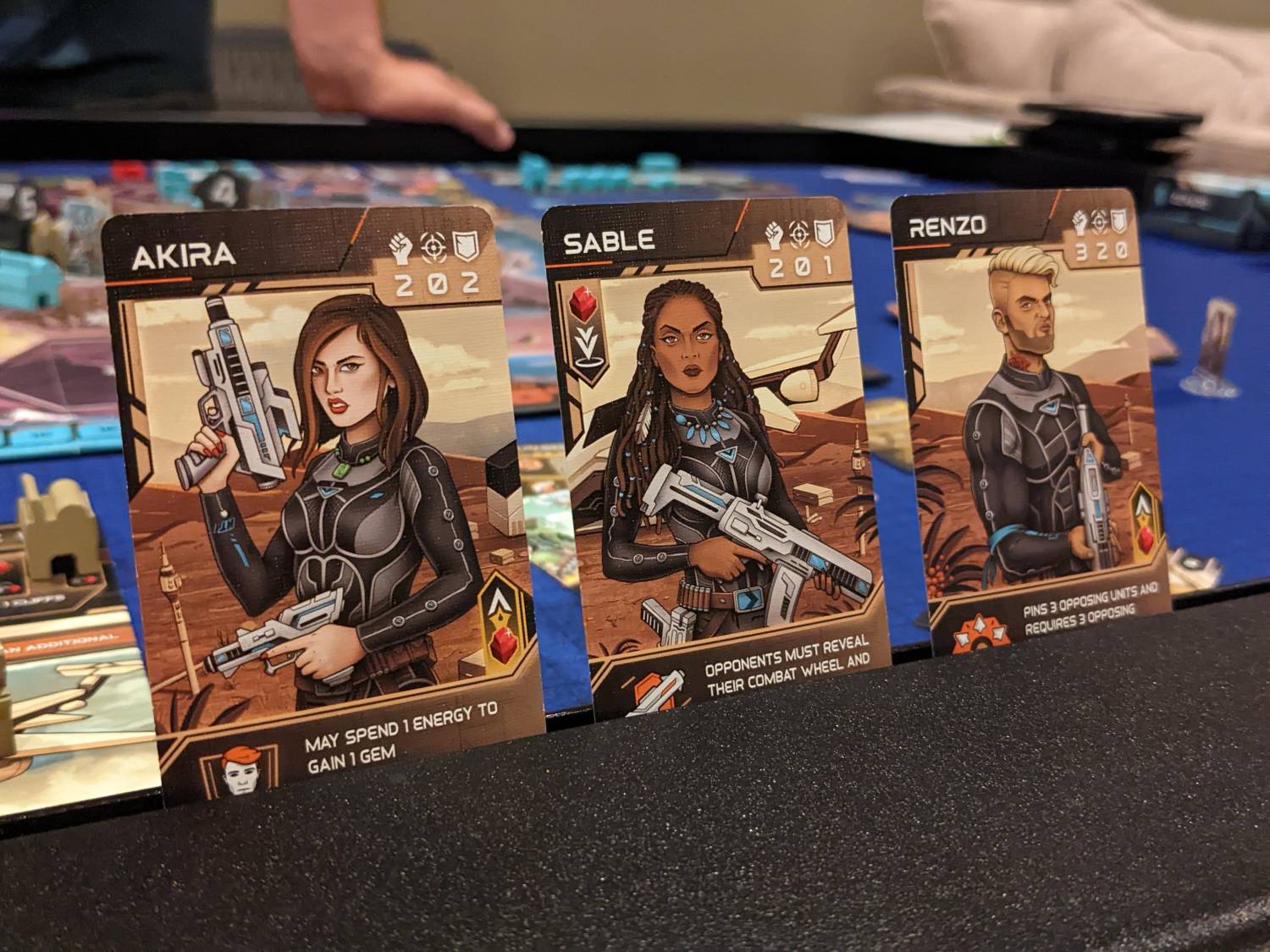
JB: The jump from the gameplay style of First Light to the direct combat/area control mechanic of Chaos Order is quite drastic. (Even the box for Chaos Order is almost double the size of the box for First Light!) Can you share your thoughts on how you planned to build the Circadians games with two such different approaches to its world?
Sam: The one consistent mechanical hook is that Circadians games feature asymmetry heavily. Asymmetry is something that is both risky and fascinating to explore from a design point of view. In First Light, players get Variable Player Powers that all seem absolutely bonkers. Storywise, the humans are negotiating with all of these different species of ‘Locals’ on the planet. The obvious next questions were “Who are these Locals really?” and “What would it be like if we could actually play as Zcharo or Jrayek in a game?”. By allowing players to play as a specific faction, we really needed to nail the motives, tendencies and general feeling of each of the factions. The act of designing a battle game forced us to build upon the world we had started to reveal in First Light – in a much deeper and more pronounced way.
The aforementioned questions, and our willingness to open up the Circadians games to be less mechanically restricted compared to Garphill’s medieval trilogies, opened the door for Zach and I to indulge our desire to design an asymmetrical dudes-on-a-map style game!
JB: What other games were an inspiration for Chaos Order? It is such a departure from the playstyle of First Light, and this is the kind of intentionality and risk-taking that we don’t see as much of right now in sequels, expansions and game families. I know that Chaos Order is a unique standalone game in a “world”, so part of this question is tied to what brand you intend to deliver with the Circadians universe.
Sam: Risk was a huge one. I seriously loved my plays of this game as a kid. Sadly, Risk doesn’t quite hold up as well today after having played a bunch of modern board games. It’s one of those things where ignorance is bliss; we were perfectly happy and excited about playing this game in the past, but I can’t ‘unlearn’ how other games have improved on down-time, combat, and luck mitigation. So we set out to recreate the feeling of playing Risk with added modern sensibilities, asymmetry and depth.
We were also heavily influenced by Root – we loved the idea and really caught the vision of the game. We felt that it left a lot of opportunities wide open for what we would personally want to see/experience in a similar game, though. Chaos Order is our response to Root.
Zach: As Sam said, Risk was a big influence for both of us, as the OG epic game we played as kids. Age of Empires 2 & League of Legends are two video games we played a lot together with our friend group, they both do balanced asymmetry in a great way! Gaia Project is a favourite of mine and definitely was an influence.
And as Sam said, Root taught us what we did and didn’t want from an asymmetric war game.
JB: I watched the video Shem shared on BGG late last year about Chaos Order. I’ve played maybe a half-dozen other Garphill Games releases (most of the North Sea and West Kingdom games, as well as Raiders of Scythia and First Light). Chaos Order is completely different than, well, all of them!
I’d love to hear more about the pitch you made to Shem when you brought this game in for the initial play, knowing that he seems to love more of the “multiplayer solitaire” style of the other popular Garphill products. Was it shocking to him? What ultimately made him bite? What changes did he offer during development?
Sam: I think it took us about 6 months to 1 year of development before showing Shem. I was super nervous because I really believed in the potential of the game and we had tailor-made the factions to fit perfectly in the Circadians world, but I knew that heavy conflict style games are not Shem’s cup-of-tea. At first, he didn’t like the game at all. Chaos Order can be super aggressive, and new players are susceptible to being surprised by what opposing factions can do. From the first play though, Shem knew that this was a good game with huge potential. He appreciated a lot of the clever little things going on, and knew Chaos Order could provide experiences that a lot of gamers are looking for.
Once Shem started writing the rulebook, he really grokked what each individual faction is about and what they can do. What was previously a surprise was now a tactical consideration to manoeuver around. He started not only to tolerate the game, but to actively enjoy it and request to play it. Shem also started winning nearly every game he played regardless of faction. We jokingly refer to it as ‘the rulebook buff’.
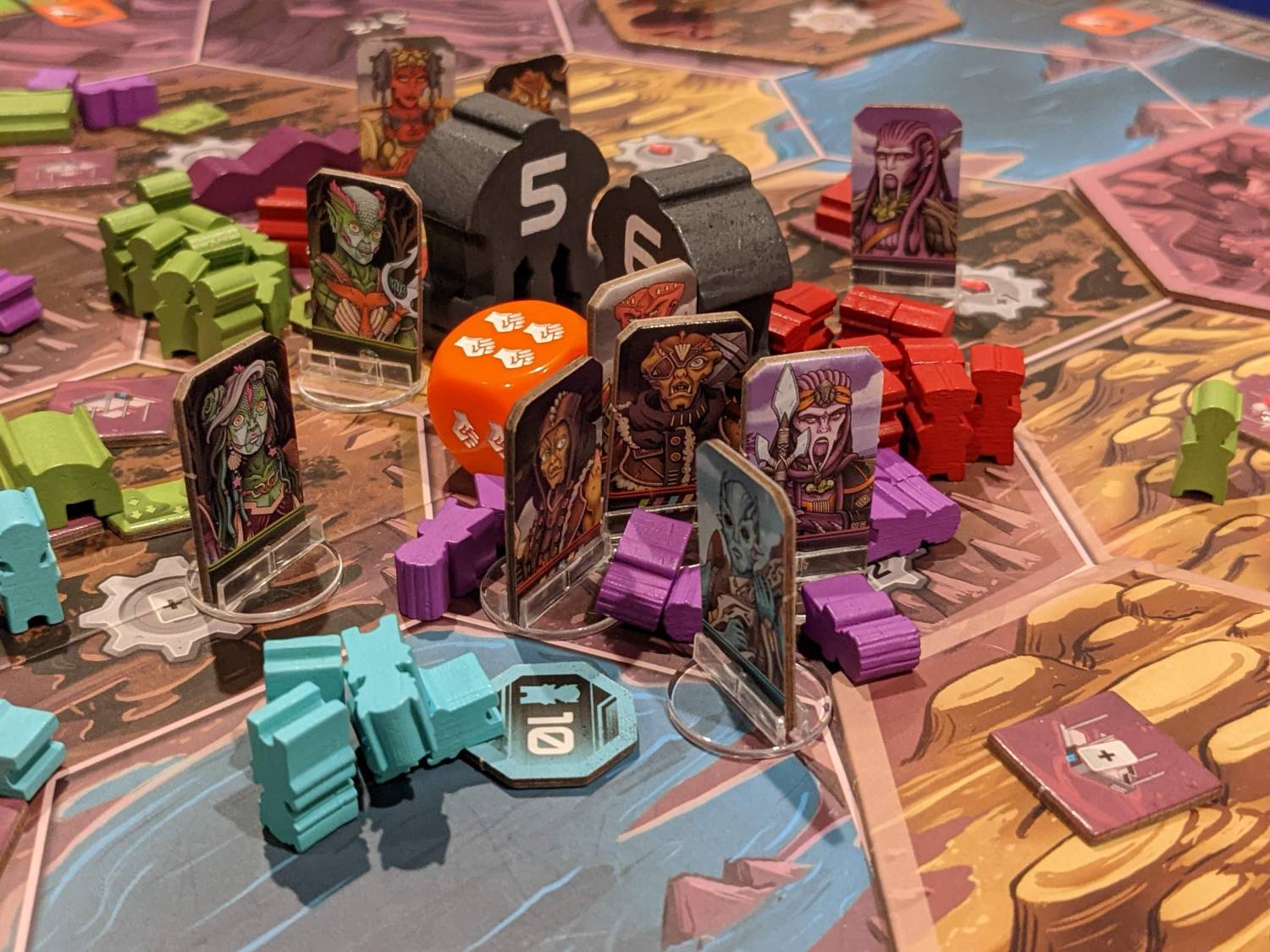
JB: During my first play of Chaos Order, one of the players in my “review crew” joined because he is a lover of other Garphill products; I could tell from the first turn he was enjoying himself but that the game was not what he was expecting.
From a brand point of view, how do you two approach selling the idea of this game to others who are used to the kinds of gameplay experiences Garphill typically delivers? Sure, it’s going to be quality, it will have great art and production…but in terms of the experience, this is not your mother’s worker placement Eurogame!
Sam: Oh yeah, this game is super different from our previous releases. To be honest, the promotion of this game is something that we’ve struggled with. A lot of our loyal fans jumped in to support us even if this isn’t their favourite genre of game, and for that I’m deeply appreciative. I guess if people have enjoyed what we’ve done in the past, then I hope that we’ve built up enough trust for them to give it a crack. We think it’s great and fully back it as a product!
In terms of how we sell the idea, I think honesty is the best approach. We haven’t hidden behind the fact that Chaos Order is a) very long and b) pretty aggressive. We have said openly that this won’t appeal to everyone who’s enjoyed our games in the past. But we think this might just be some people’s favourite game! A whole game group could be set up around playing Chaos Order regularly, and the evolving meta-game would be fantastic.
JB: The Set Prices mechanic is possibly my favorite gaming mechanic of the year. How did this idea come about, and how (if at all) did this change from the time you dreamed up the game to the product I have at home now?
Sam: Thanks! I believe there are numerous starting points for each game. I’ve already spoken about the conceptual/thematic beginning, but the Set Prices was another beginning.
It was the mechanical hook.
Initially, players would draft a single action card, a la Citadels. After everyone had had their turn to select 1 action card, players would then secretly and simultaneously set their die to a value to denote the price for other players to take it. This worked, but moving all of the actions to the main board allowed for a more logical order of actions (e.g. Move before Harvest was messy) and less downtime (picking and passing cards actually can take a while).
Zach: Then pretty quickly we realised we needed to be taking more energy out of the economy and that we didn’t want players just pricing the same number over and over again. This led us to move away from the dice to tokens.
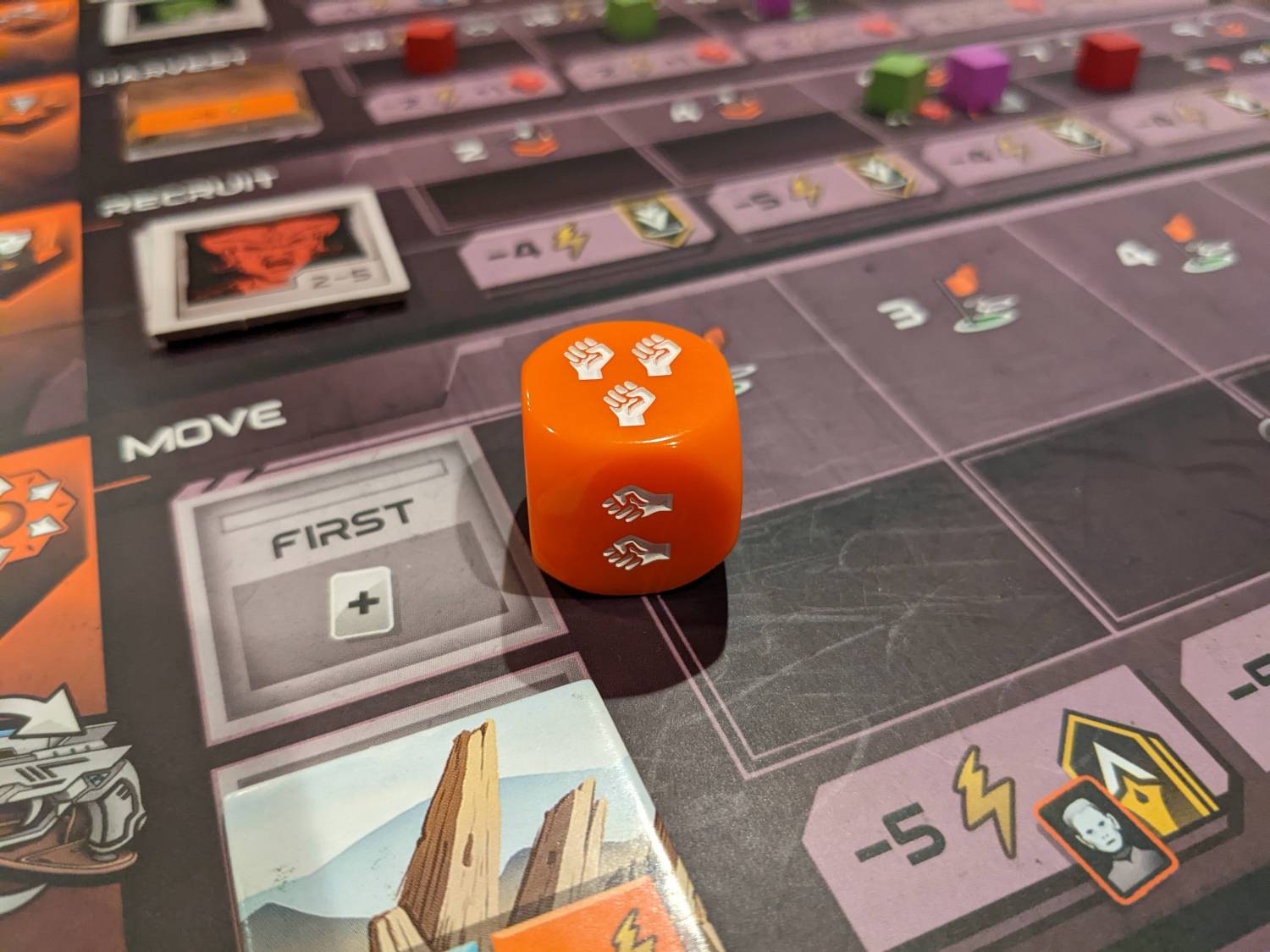
JB: I’m just curious: how many times did you collectively playtest this game? I ask because the score balancing in this game seems to be very strong. Landing on 4 Fame points for the Circadians versus, say, 9 Fame for the Oxataya; sifting through plays to determine how to make that part land just has me thinking about the amount of work you (and all game designers) have to think about when landing on just the right fit.
Zach: A lot! The pandemic actually helped, because due to living on opposite sides of the world we were using Tabletopia then eventually Tabletop Simulator to playtest. The pandemic gave us lots of friends who were bored at home and willing to try our game.
I think most of the more difficult balancing is also around early-game. We obsess over things which probably seem minor: We debate whether a leader should have that one extra attack, shield or strength, how many fighters each faction should start the game with etc. We have tried our best to ensure that each faction has a chance to win the first round’s Relic, then obviously good pricing and decision making can tip the balance. Then a lot of the rest was about timing. For me any faction who is playing above average should be able to win round 4 (on their personal victory goal), and faction playing averagely should be hitting their goal at round 5. Round 3 victories are possible if a player is absolutely stomping (let’s be honest, when that happens it is better that the game finishes quickly), and round 6 can happen when players are counterplaying each other pushing the game to an epic conclusion. Relic Victory tends to come into play from round 4 onwards.
JB: What’s your favorite Faction to play with and why?
Zach: That is a VERY hard question. I think faction enjoyment for me comes from the challenge of playing them. For example I would probably say Leyrien, but I’m not the best Leyrien player, Sam is very scary with them. Whereas I am a very strong Oxataya player, but they probably don’t even make my top 3 favourite factions. I do also love the mind games that AI creates.
Sam: They’re all my babies! Haha. If I were to choose one, maybe Circadians? They have a lot of unique tools at their disposal. There are a lot of different ways they can pursue their win condition, and the agency is something I always appreciate. Plus, who doesn’t want to have a mobile fortress (the Drop Ship) at their disposal?
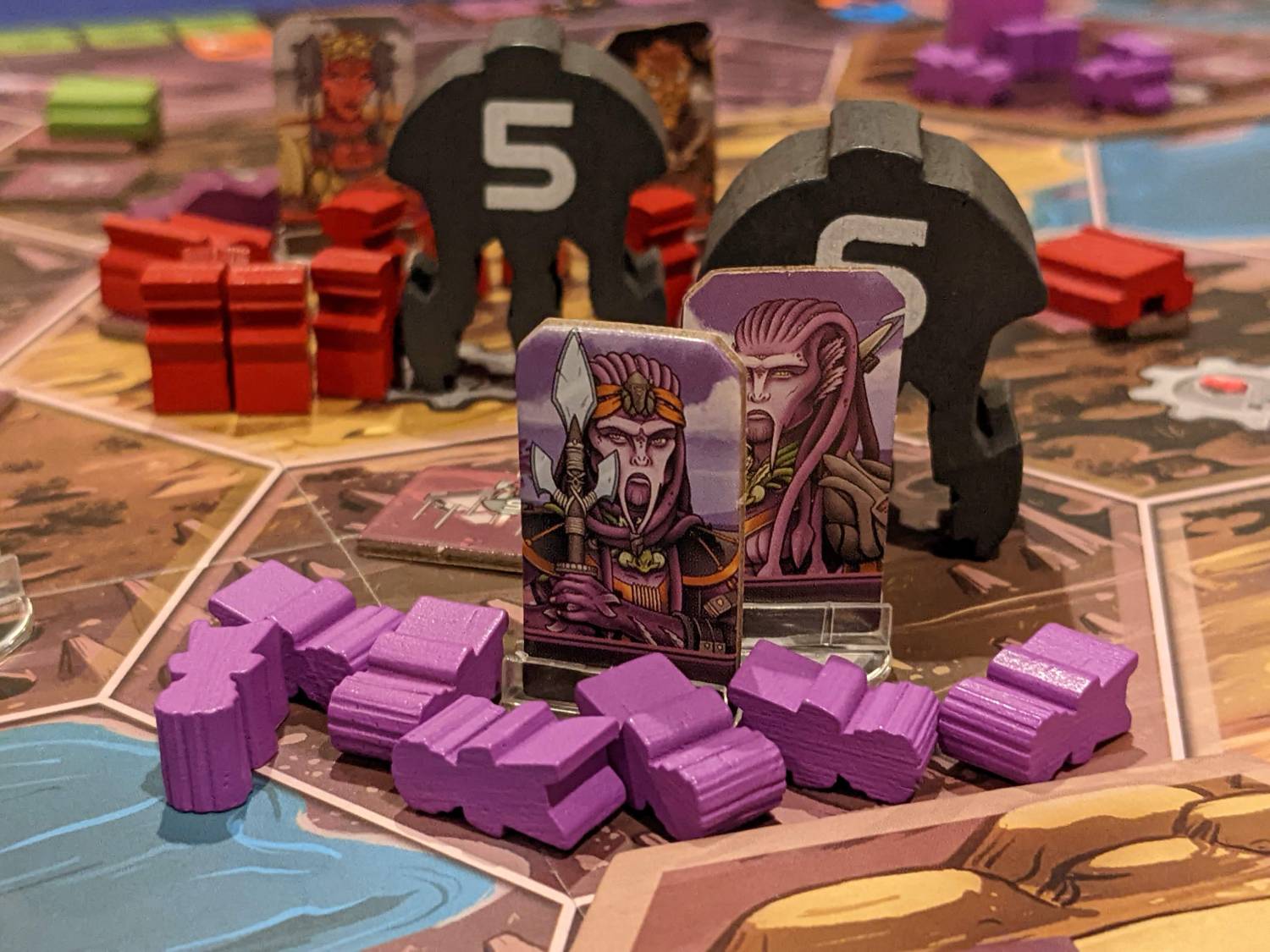
JB: Did you ever consider rating the Factions based on difficulty? (Games like Sidereal Confluence use this to great effect.) For example, I now advise people to not use the Circadians in their first play because their Base/Jump Ship concept is difficult to explain to a new player. What Factions would you suggest for a player’s first 3-player game?
Zach: We definitely considered it, but I don’t think in this case it is super necessary. Our asymmetry isn’t on a Root level (you are each almost playing a different game). And I find that the difficulty in playing factions is often down to personality and playstyle. I do think Circadians and AI are maybe a little harder to wrap your head around, so for a first play I’d say any of the native factions (Jrayek, Leyrien, Oxataya & Zcharo).
Sam: Maybe it’s one of my weird quirks, but I actually bounce off of this thing pretty hard. I don’t really like telling players what they should or shouldn’t do in their first plays. I think all factions have their own areas of trickiness, not only for themselves, but also for their opponents. We didn’t design any factions with an ease of play scale in mind, so I’m not convinced that working something like that back into the completed factions would be sufficiently nuanced.
JB: The AI Faction has confused every player I have showed the game, because the player cap is 5, and there are 6 Factions in the box, and there’s an assumption that the AI is an automa that can be used to swell the presence of Factions on the board.
I love the creativity of the other Faction names, at least two of which carry over from First Light. But, AI?? Was the plan to ever build AI into an Automa? Is the name AI an inside joke for the Garphill team?
Sam: I want to speak to the ‘Max 5 Player’ but ‘6 Factions in the box’ notion, because this is something I’m really passionate about. A huge portion of the variability of the game comes from not just who you are playing as, but who you are playing against. You are not playing your faction in a vacuum, and if you do so, that’s a very quick path to defeat. You have to constantly be mindful of your Opponent’s goals. In my opinion, asymmetry is at its best when it altars the interactions between players. All of the contrasting motives, potential permutations and layers will keep the puzzle fresh and engaging.
I really feel it when I’m facing Jrayek for example. The whole ecosystem around Leaders is changed. Your Leaders are constantly being hunted! You have to be mindful of where to leave them after moving, and maybe you’ll think twice about hiring another one. And then you play a game without Jrayek in it – what a relief! I can now recruit more Leaders and not worry about feeding the ‘big red bully’.
By the same token, each faction is designed to change the game for all players in their own special way. For each playthrough of Chaos Order, you will not only notice the inclusion of the factions in play, but you will notice the exclusion of the factions not in play, and the combination of those two things will give each play its own unique texture.
Regarding AI’s name, I totally get you. We had originally named them ‘Capek’ as a throwback to a very early Garphill release about building Robots. You might even be able to spot this Easter egg in the game! But we eventually reverted to AI. The faction was called ‘AI’ in First Light, and being consistent in our worldbuilding felt like a good thing.
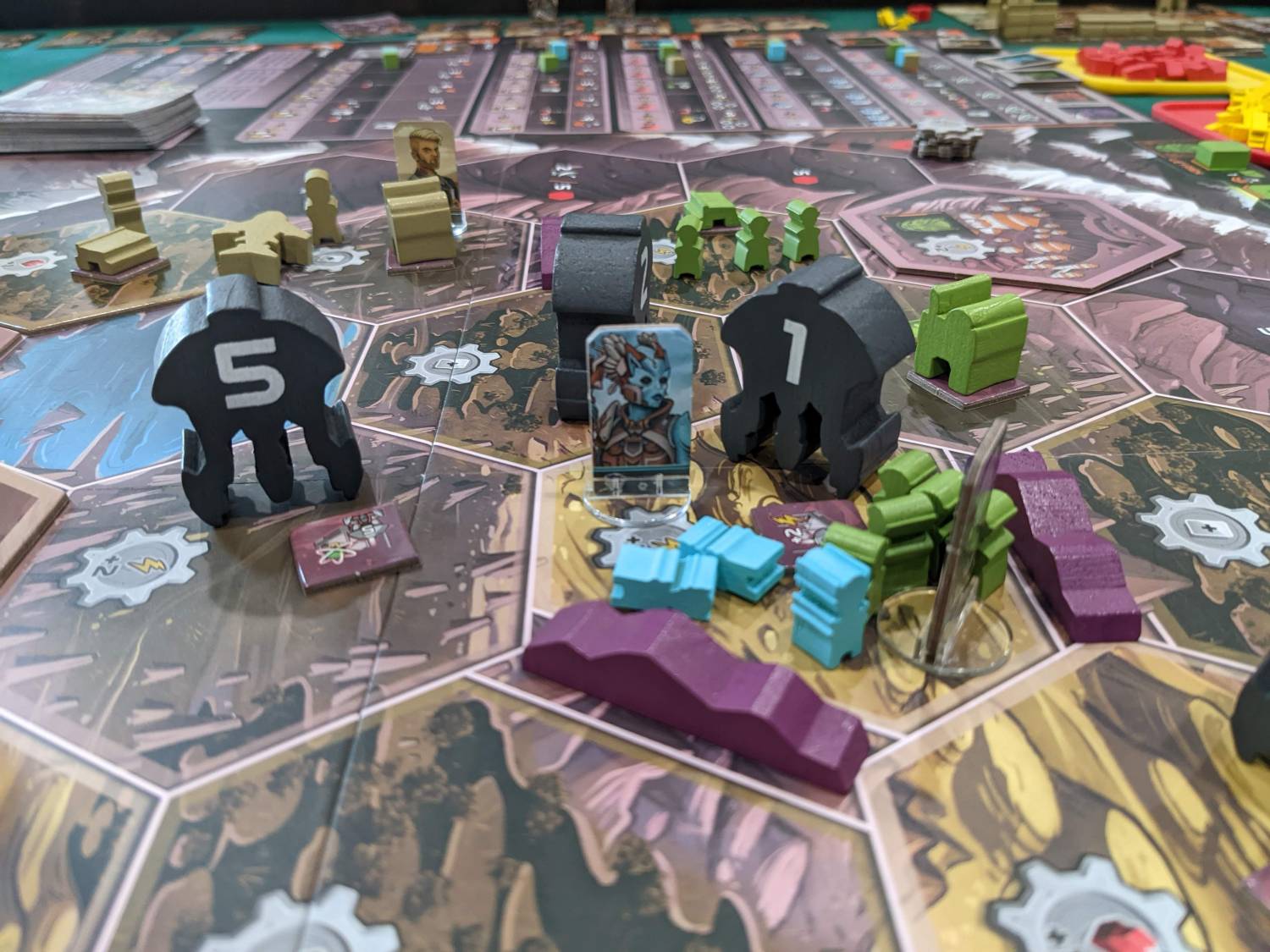
JB: Chaos Order plays 2-5 players, but it feels like the game lives best as a 4- or 5-player experience. Did you consider raising the minimum player count for the final version? Or have playtests shown to be as lively with 2 players?
Zach: We were actually pleasantly surprised at how well 2 player works (and how balanced it is). Personally I enjoy a higher player count, but I do in general because I play boardgames as a fun way of spending time with people. But some reviewer friends of mine here in Italy who tried the game on Tabletop Simulator liked 2 player the best (it has the least randomness and is a real battle of wits, especially the pricing phase becomes really spicy when you have 2 tokens to place).
Sam: I agree with Zach. I’ll add that 3 Player is fantastic with strong players. It feels like everyone is fighting an uphill 1 v 2 – where both opponents are super mindful of what you are doing and trying to slow you down. Lots of mind games and table talk.
JB: How has the board changed from concept to final production? I adore the way the left-hand portion of the board serves as a massive player aid, research/tech track, turn order reminder, and area for the Tactics cards. Having the score tracker run around the outside of the map is also excellent. While I don’t love the visual cues of the terrain (I still get confused about which terrain is a Plain versus a Swamp), I love how tiny the map is, to encourage combat from the beginning of play.
Zach: Research started on the player boards (before it was specifically tied to each game action). The map has always been the same size per player count (in terms of number of regions) from when I originally made the first version on MS Paint (just joking, I actually used GIMP)… but it is better that I don’t show you that monstrosity. It actually wasn’t hexes until later on when Shem got involved. He helped a lot with getting the map to work properly!
JB: What’s next for the Circadians line? Will there be expansion content for either of the Circadians games coming soon? Even after my first couple of games of Chaos Order, more Factions feels like the right move…
Sam: We have recently just announced an expansion for Circadians: First Light, the Specialists expansion. (You can check it out here: https://boardgamegeek.com/boardgameexpansion/368403/circadians-first-light-specialists-expansion). I think it could be my best expansion to date! It really adds a lot. More interaction, more playstyle paths opened up, more tension and a tonne of new Leaders to play as.
We are also going to release a mini-expansion for Chaos Order at the same time. Each faction will gain 2 more Leaders. At the start of the game, each player chooses their squad of 3 Leaders (out of a possible 5) for the game. This is so fun and provides players with yet again more agency. The mini expansion adds an Attribute for each faction, and a bunch more Tactics Cards too.
We are still having fun with Chaos Order so you can definitely expect more content for this game before we ever do a potential Circadians 3. I have a few ideas bubbling away though! We’ll just have to wait and see if anything ever comes of them.
JB: Thanks for taking the time to share more about the game and good luck with the upcoming slate of Garphill Games products!
Sam: Thanks so much for your time and for playing this epic beast of a game. I really appreciate it.
Zach : Thanks for taking the time to speak with us!


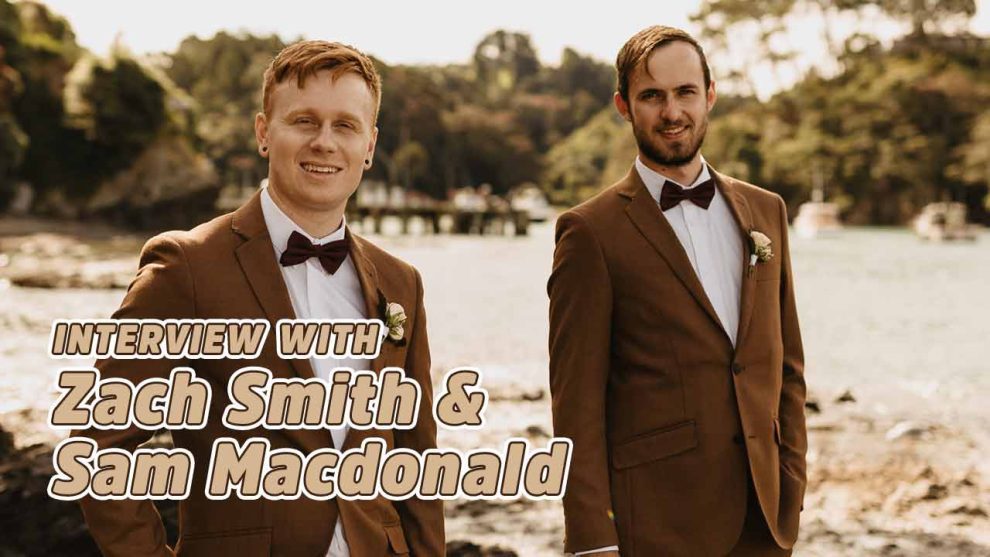
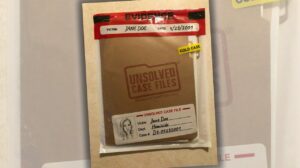

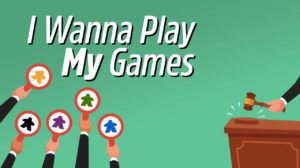
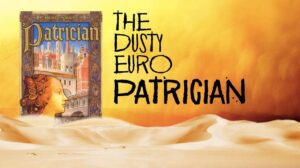




Add Comment